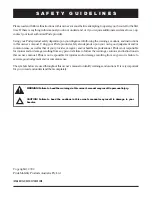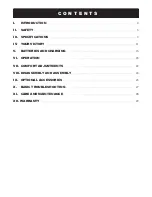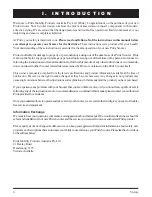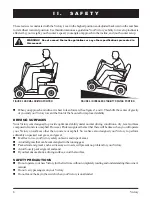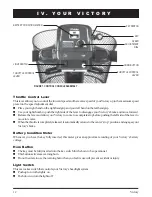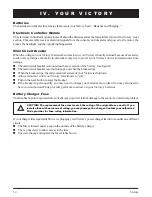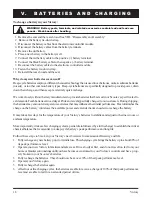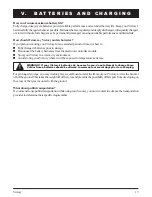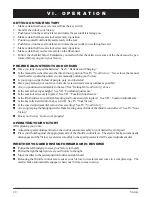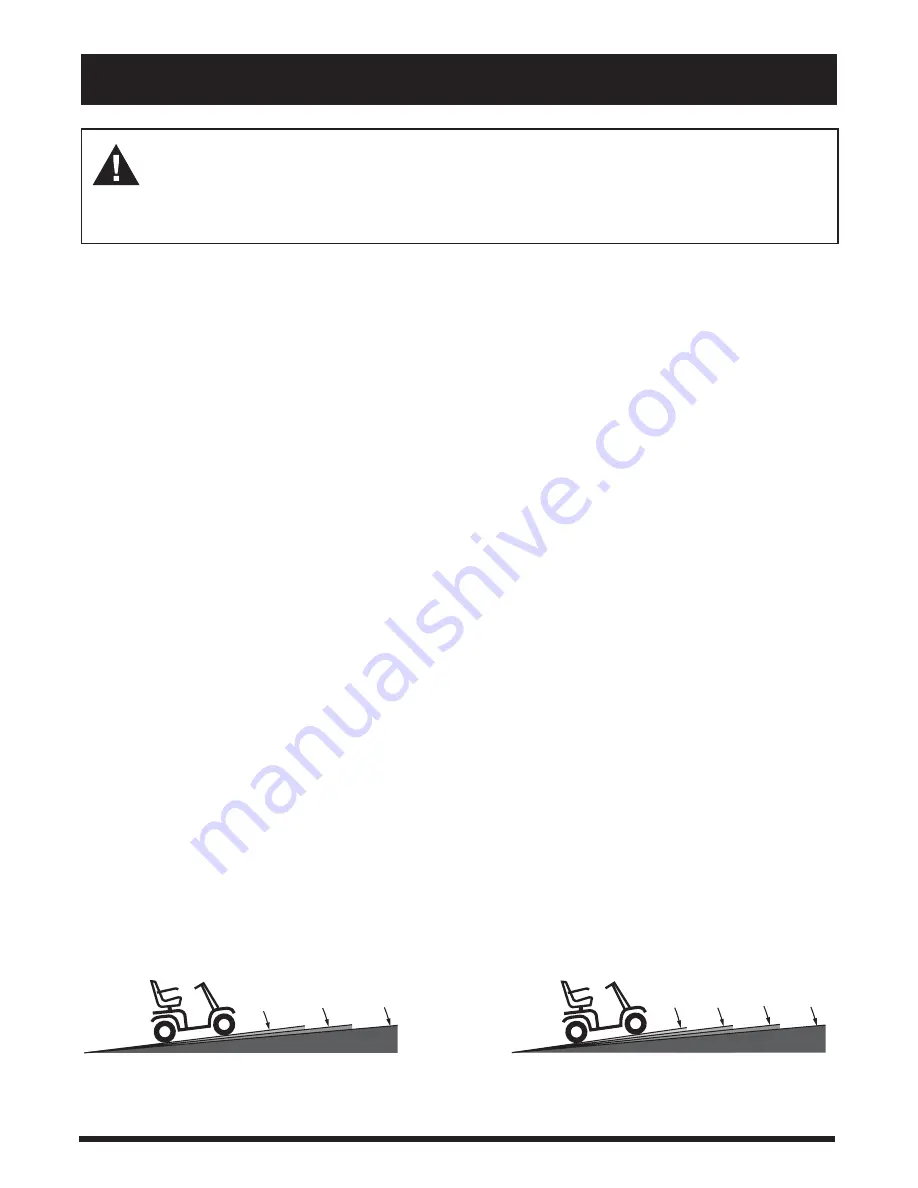
7
Victory
I I . S A F E T Y
As you begin to use your Victory during your daily activities, you will encounter situations that, at first, may require
some practice to negotiate on your Victory Scooter. Simply take your time as you operate your Victory and you
will soon be in full and confident control as you maneuver through doorways, on and off of elevators, up and down
ramps, and over moderate terrain.
DOORS
n
Determine if the door opens toward or away from you.
n
Use your hand to turn the knob or push the handle or push-bar.
n
Drive your Victory gently and slowly forward to push the door open, or drive your Victory gently and slowly
backwards to pull the door open.
ELEVATORS
Modern elevators have a door-edge safety mechanism that, when pushed, reopens the elevator door(s).
n
If you are in the doorway of an elevator when the door(s) begin to close, push on the rubber door edge or
allow the rubber door edge to contact the Scooter and the door will reopen.
n
Use care that pocketbooks, packages, or Victory accessories do not become caught in the elevator doors.
RAMPS AND OTHER INCLINES
More and more buildings have ramps with specified degrees of inclination. These ramps are designed for easy and
safe Scooter access. Some ramps may have turning switchbacks that require good cornering skills on your Victory.
n
Take wide swings with your Victorys front wheel(s) around any tight corners. If you do that, the Victorys rear
wheels will follow a wide arc. Do not cut the corner short, and do not bump into or get hung up on any railing
corners.
n
When driving down a ramp, keep the Victorys speed adjustment dial (see IV. Your Victory) set to the
tortoise (slowest speed setting) to ensure a safely controlled descent.
n
Never drive your Victory across the side of a hill or diagonally up or down a hill, and do not stop, if possible,
while driving up or down an incline.
n
Avoid sudden stops and starts.
Other inclines may be natural or, if man-made, not designed specifically for Scooters. Figures 1 and 2 illustrate
your Victorys stability and its ability to climb grades under various weight loads under controlled testing condi-
tions.
FIGURE 1. MAXIMUM RECOMMENDED INCLINE ANGLES
(3-WHEEL)
FIGURE 2. MAXIMUM RECOMMENDED INCLINE
ANGLES (4-WHEEL)
(200-250 lbs.)
(300 lbs.)
(150 lbs.)
68 kg/11
stone
90-113 kg/
14-18 stone
136 kg/21
stone
68 kg/
11 stone
90 kg/
14 stone
113 kg/
18 stone
136 kg/
21 stone
(250 lbs.)
(300 lbs.)
(200 lbs.)
(150 lbs.)
8.7%
10.5%
12.3%
8.7%
10.5%
12.3%
14.1%
68 kg
(150 lbs)
12.3%
90 - 113 kg
(200-250 lbs)
10.5%
68 kg
(150 lbs)
14.1%
90 kg
(200 lbs)
12.3%
113 kg
(250 lbs)
10.5%
WARNING! Do not operate your Scooter while you are under the influence of alcohol. Operating
powered vehicles while you are under the influence of alcohol impairs your ability to operate your
Scooter in a safe manner and may violate certain existing laws.
WARNING! Do not use your Scooter as a seat in a moving vehicle. Your Scooter is not designed to
be used as such and cannot protect you in the event of an automobile accident or an abrupt stop.
136-158 kg
(300 -350 lbs)
8.7%
136-158 kg
(300 -350 lbs)
8.7%


